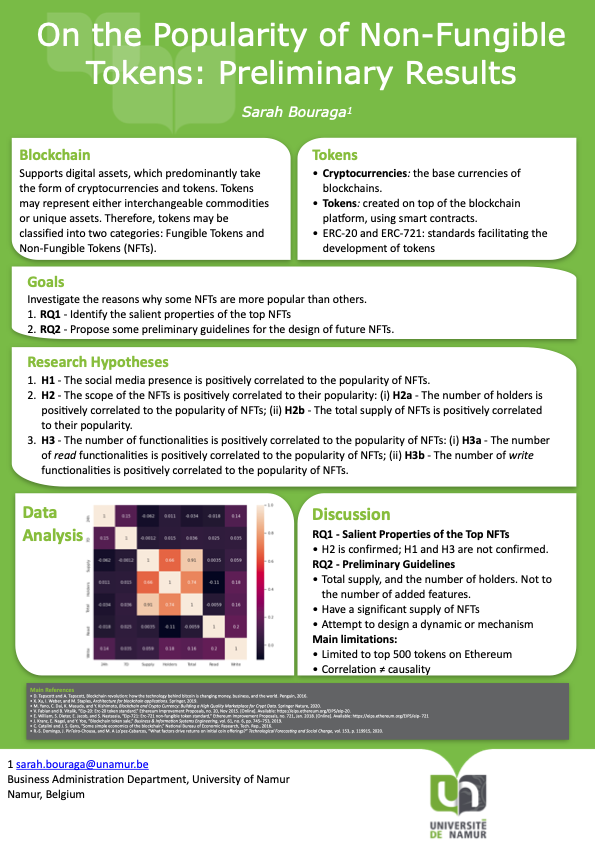Paper presented @BRAINS2023, conference held in Paris (October 2023).
Abstract. Blockchain technology and Non Fungible Tokens (NFTs) have been a hot topic for several years now, as proven by the multitude of brands launching their own NFT projects. In this paper, we will consider some popular fashion NFT collections, namely: adidas Originals Into the Metaverse, AMBUSH OFFICIAL POW! REBOOT, Azuki x AMBUSH IKZ, CULT & RAIN – The Genesis Collection, Dolce& Gabbana: DGFamily, Dolce& Gabbana: DGFamily Glass Box, Chito x Givenchy NFT, MUGLER – We Are All Angel, RTFKT x Nike Dunk Genesis CRYPTOKICK, Prada Timecapsule. First, we will analyze and examine if we can find salient characteristics of transactions pertaining to these collections. Second, we will attempt to propose a first taxonomy of fashion NFT transactions. From the results, we can state that most transactions occur at the NFT launch and that they belong to the Memberships category. Secondly, the results show that we can propose a taxonomy of four transaction groups or clusters. The findings can have practical implications for both researchers and practitioners, indeed the results: (i) can be a stepping stone for future research on (fashion) NFTs, (ii) can help practitioners analyze transactions using our preliminary taxonomy.


